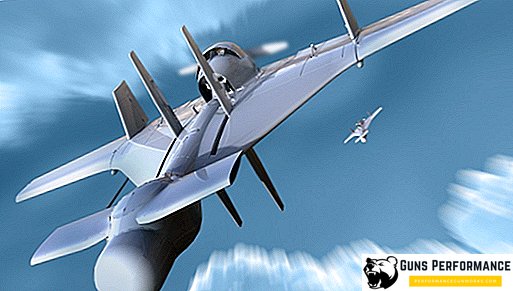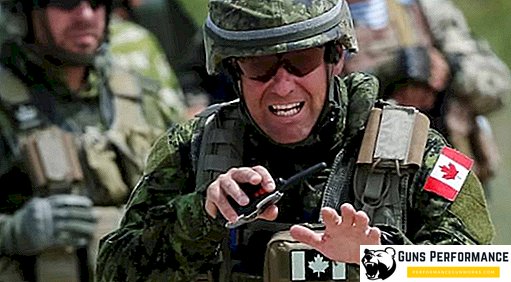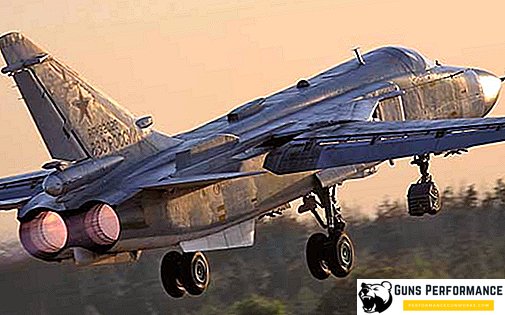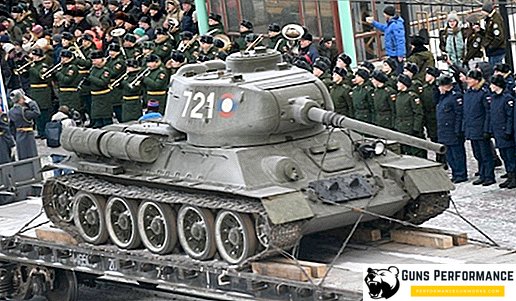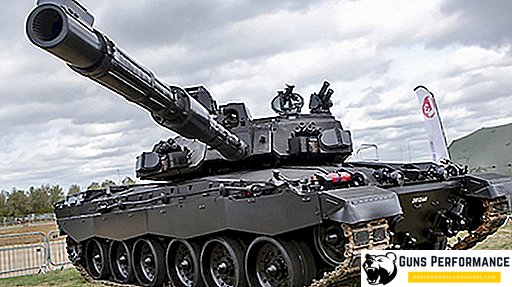ZIL-111 - Soviet passenger car, which was used by senior management of the country and important persons. Gathered in several versions of the body, was used in numerous parades. Released a small number of copies, which makes the car unique.

The history of the creation of the ZIL-111
Until the middle of the last century, the Soviet leadership used the ZIS-110 for movement. By the end of the 50s, the car was morally and technically outdated, so it needed replacing it. The country needed a new transport supporting the image of a large state on the world stage.
In 1948, a modification of the 110th model was designed, which received the index "M". She retained the old chassis, but received a restyled body with modern outlines inherent in the "Victory" 1948 release. Auto was a prototype. The specialists among themselves called him ZIS-111, but this name was not indicated in official documents.
In the mid-50s of the last century, designer Valentin Rostkov developed a new project of the state machine. According to him collected a new model with a new chassis. The development of a new chassis involved the team under the leadership of A.N. Ostrovtseva, who also led the project ZIS-110. The new model received the name ZIS-111 "Moscow". Unofficial sources claimed that the first copies of the sedan received the chassis from the 110th model.

The main difference from the old generation - a modern body design. He combined in himself the best features of premium passenger cars from American manufacturers Cadillac, Packard and Buick. Appearance turned out to be banal, there was nothing unique in it. Until 1956, collected 2-3 copies. They were shown at many domestic exhibitions, but they did not arouse consumer interest. In 1955, American counterparts moved to a new design direction, so the new car was inferior to them in beauty.
To solve the problem, the company launched a competition to develop the design of the machine. From different parts of the Union received many interesting options. The final choice was made from two proposals - Rostkov and Lev Eremeyev (he worked at the GAZ enterprise, developed the Volga GAZ-21 and ZIM-13, which later became known as the Chaika). The choice was made in favor of the idea of Lev Eremeeva in 1956. Valentin Rostkov did not accept the loss, so in the same year he left his place of work.
The history of the release of the ZIL-111
The first working copy was collected in 1961. Distinctive features were the grille, new bumper, twin headlights. The remaining design solutions strongly resembled the original version.
Over the year, the appearance was changed even more: the rear lights got a round shape, the windshield received a new design, the frames and moldings were replaced with new ones, and the engine power was increased. If you evaluate the full picture, it becomes clear that the main design decisions are taken from the Cadillac of the 61st year of release. Release in small batches proceeded from 1962 to 1966.
On the basis of "G" collected several modifications. The first was the model with the index "B", which received the opening body. The name of the second received addition "D". Auto was a parade phaeton. The first open ZIL-111 was assembled in early 1963, when the standard version restyled.

At the end of April 1963, Fidel Castro visited the Likhachev plant as part of his visit to the USSR. He made an official gift - a new open premium car. Castro went home by plane, and his new transport to Cuba was brought by ship into the hands of the Soviet ambassador to that country. He personally delivered transport to Fidel Castro already on the island.
In the subsequent period, collected a few more copies. Four of them planned to use at state celebrations and parades. According to the plant, just collected 8 cars with the index "D". November 7, 1967 the debut of cars on the Red Square. They took part in the parade for the 50th anniversary of the Great October Socialist Revolution. Until that time, the first versions of the 111th model took part in the parades, and their condition was not satisfactory. In the same year, the first batch of the 114th model was released at the Likhachev plant, which was distinguished by its strict design and high-quality trim.
The 111D phaetons were used in military parades until the mid-1970s. For the army, they were painted in gray-green color. They were replaced by modern at that time cabriolet ZIL-117V. Until the end of the 80s, decommissioned cars were carefully kept in the garage of the Ministry of Defense. In 1987 they were officially handed over to the Fire Department of the Moscow Region, where they are nowadays.
ZIL-111D is listed in three more copies, the body of which was painted black. One car went as a gift to the GDR, the other two were kept at the enterprise for a long time. Their fate is unknown. The main "know-how" of domestic products was the button to automatically open the roof. People of that period in the design remember the antenna on the rear wings. They played a functional and decorative role. Total produced 112 cars of all modifications.

Specifications and device ZIL-111
Initially, the engineers planned to take as a basis the chassis of American products, and on them to put the body with an updated design. It was not possible to realize the idea due to the size of the engine, so I had to make my own changes. The long powerplant of the old generation was replaced with a V-shaped one to reduce the load on the front wheels.
Specifications:
- Length - 6,140 millimeters;
- Width - 2,040 millimeters;
- Height - 1,640 millimeters;
- Clearance - 180 millimeters;
- The volume of the power plant - 6 liters;
- Power unit capacity - 200 horsepower;
- Box - automatic;
- Drive - rear;
- Maximum speed - 170 km / h;
- Fuel tank capacity - 120 liters.
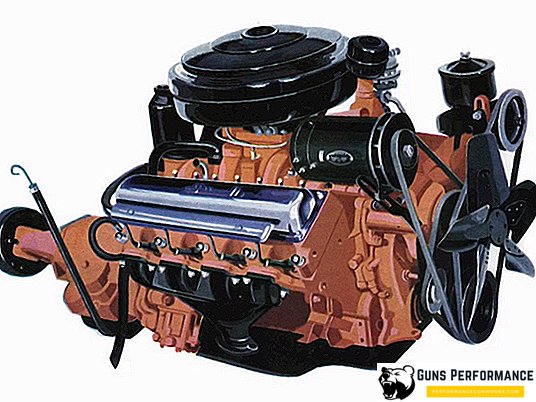
Motor
The new engine ZIL-111 became shorter by one and a half meters due to the two-row arrangement of eight cylinders. Mass reduced by using aluminum in the production of pistons and reducing the number of crankshaft journals from 8 to 4 (this was achieved by placing two connecting rods on one neck). The volume of one cylinder is 5.969 liters. At 4,200 rpm, a power of 200 horsepower is achieved, which is 60 more than that of the 110th model.
The power was increased by increasing the compression and improving the filling of the cylinders with fuel (the exhaust pipes were shortened, and the cylinder heads were equipped with upper valves). The use of the carburetor of the new generation K-85 has played a significant role in improving power. It consisted of four cameras. They began to work one after another, depending on the speed of transport. This design solution reduced fuel consumption when driving in the city and increased the maximum speed to 170 km / h.
A feature of the car ZIL-111 was the automatic transmission. It was called new, but before that it was equipped with a small series of the 21st Volga. After that, it was also used on the Seagull.
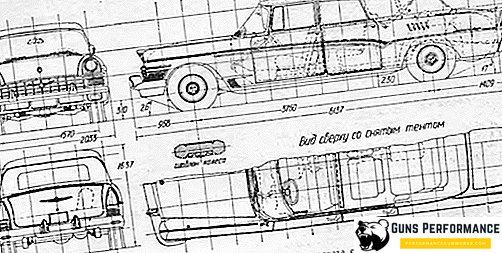
Dimensions
Designers when creating a car tried to reduce the height, but leave the same clearance. Also an important detail was the placement of seats for passengers inside the wheelbase. Reduced altitude improved road stability and aerodynamics at high speeds. Rear sofa increased in size.
Power steering
In the design of the ZIL-111 added GUR. This has become a novelty for domestic passenger transport. He simplified the rotation of the steering wheel four times. Driving a car with this addition has become easier. Also GUR added comfort - when traveling over bumps did not feel the shocks in the steering wheel.
The power steering device included a power cylinder, a control valve and an oil pump, which were connected to the steering mechanism. The oil pump of a bladed type of double action was established in front of the motor. A belt drive from the crankshaft pulley was responsible for his work.
Brake system
It consisted of two systems - foot and hand. Thanks to him, the driver could perform braking with minimal stopping power, even at high speed. Foot mechanism had an impact on all wheels. It was supplemented with a hydraulic drive with an amplifier, which reduced the effort required from the driver when pressing the brake pedal. One cylinder was responsible for the operation of the rear shoes, two cylinders for the work of the front shoes.
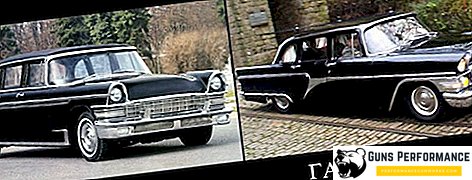
Comparison of GAZ 13 Chaika and ZIL-111
One of the main differences - molding. In Chaika, he has a bright expression, indicated by the highlighted relief. The design of the molding of the 111th model is simpler, but it gives the character of swiftness to transport. In front, he looks more emotional. The length of the Seagull is 5.5 meters, and the ZIL-111 is just over 6 meters.
The impudence "111" attached fangs on the bumpers. Fog lights got a rectangular shape. For decorative purposes, the emblem and grille covered with gold. The gull on the background of this car looked softer and calmer. The taillights of both cars are made in fin style, but in Chaika they have a more modern look.
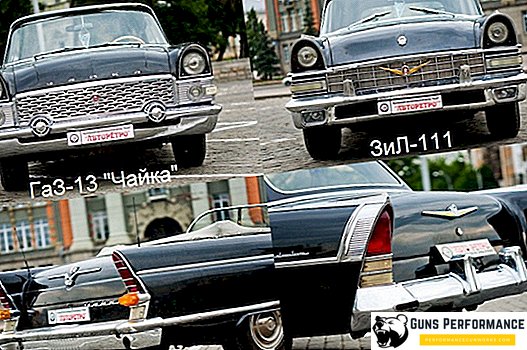
The volume of the power unit Seagulls less than half a liter, inferior in power by 5 horsepower. Aluminum parts in the engine more, so the weight is less. Mass gearbox less, despite the greater number of speeds. Due to the lower weight, the Seagull accelerates to 100 km / h in 20 seconds, and the ZIL-111 in 23 seconds. The fuel consumption of the first - 23 liters per 100 kilometers, the second - 30 liters.
The interior of the Seagulls is Packard design solutions. The dashboard "111" is also borrowed from American colleagues and is not inferior in quality. In the trim of both cars used high-quality and expensive materials that have served the owners for many years with proper care. The seagull, the first in the history of the Russian automotive industry, received electric windows.
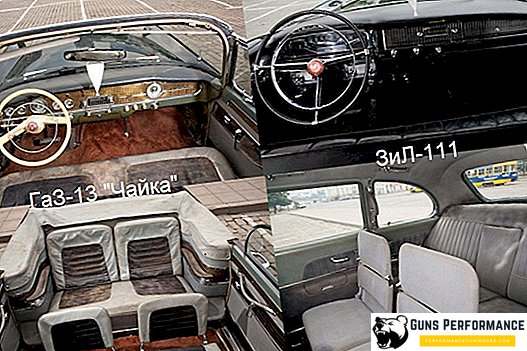
The popularity of the Seagull in Russia is higher than that of the ZIL-111. She had a simplified design, did not require careful maintenance and costly maintenance. The advantage is due to the production time and the number of copies issued.

What can be concluded?
ZIL-111 is a premium car in the USSR. He was remembered by many residents of the socialist period, was used by the leading leadership of the country. Many people dreamed of such a machine, but it was beyond reality due to the low-volume production and the precise purpose of certain government agencies. Some copies have survived to the present day, they are kept in private collections and cost a lot of money. People try to find cars in poor condition in order to restore them and bring them to their original condition.


